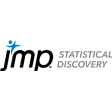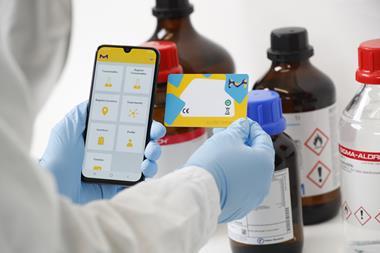Are you under constant pressure to innovate? Get a boost from data analytics
The drive to innovate in the process industries – chemicals, pharmaceuticals, biotechnology, polymers – is a continuous response to society’s demands to be able to eat, have a home, communicate, travel, stay healthy, keep warm or cool, and enjoy a clean environment. These ongoing, grand global challenges cannot be tackled without chemistry and engineering. There is a rising challenge to use fewer resources and more sustainable methods, filtering right down to the manufacture of everyday items we take for granted.
The key challenges are always to minimise laboratory and pilot plant time while gaining the most information from the work undertaken. This is not just an issue of cost and individual time savings: it’s about getting your results out first, getting them to market, and getting the value into the company as early as possible. The quicker the laboratory and desk work achieves its goals in R&D, the greater the value that might be captured from an eager customer or a new market.
There are many variables – the quality and variability of raw materials, the control of many process parameters, the durability of processing equipment, waste and emissions management, the quality and performance of products, their storage, packaging and delivery to the customer. Even then, issues remain. How does the material supplied perform in the downstream customer’s processes, products and markets? Despite a perfect production run, if this material does not perform at the customer’s premises, then there will be a backlash that inevitably finds its way back to the manager’s office.
Without analytics, you are relying on faith, hope and, to some degree, charity. Will the customer wait for the next set of results?
The role of analytics in innovation
Smart experimental design can help to identify the parameters that need to be tested to prove their potential sensitivity. Focusing on what matters is key to limiting the amount of experimentation needed to capture enough data from which you can identify the sweet spots to use and control during product development and scale up.
It’ not just the cost of technical personnel and facilities that are important here; it is the opportunity cost and value that can so easily drown in a sea of data if no significant relationships can be identified early on. Without analytics, you are relying on faith, hope and, to some degree, charity. Will the customer wait for the next set of results? Design of experiments and analytics can help a company be more predictive and be more assertive about its knowledge and when results will be available. Imagine the benefits of being able to tell the business development manager after a couple of days, ‘our work will be complete in three weeks’ instead of leaving it open ended and uncertain.
Case study: right first time
A company wanted to bring a catalyst to market that could synthesize aliphatic polycarbonate polyols from waste carbon dioxide. They identified 35 factors that might affect yield, polymerisation rate and by-product production, and they couldn’t see an efficient way forward to optimise the process. In the past, they had tried traditional experimental (or one factor at a time) approaches with varying success. Sometimes they were lucky and identified a solution quickly; other times they were unlucky and had significant over-runs. They heaved a sigh of relief when they found a solution, but they were never sure they had found the best, most robust or lowest cost process.
With JMP Pro, they were able to exploit their existing data to identify the top 10 factors out of the 35 that might be responsible for their outcomes. Using these top factors, they defined an efficient data collection plan requiring 21 individual experiments. After conducting these 21 individual experiments they were able to fit a predictive model, query and present that model graphically to gain insight and communicate that insight to key stakeholders, delivering the solution needed to successfully scale production to 7,500 litre capacity. The findings were at odds with simple kinetic theory, which also led to a better understanding of the reaction mechanism. Rather than commercialising the catalyst, the business unit was spun off to Saudi Aramco for $100 million.
The data analytics opportunity
McKinsey & Company, in its December 2016 report The age of analytics: competing in a data-driven world, estimated that companies could cut product development costs in half by embracing the data and analytics revolution. The biggest barrier companies face in exploiting the benefits of data is organisational; they struggle to incorporate data-driven insights into day-to-day business and find it hard to attract, nurture and retain the right talent –people who are data savvy with industry and functional expertise. McKinsey further stated that as data grow more complex, distilling and bringing it to life through visualisation is crucial for making it digestible and actionable for decision makers.
JMP solves your organisational barriers by making it easy for your domain experts (innovation, R&D, production and business development managers) to harness data analytics so they can make better decisions and communicate knowledge discovered in data through dynamic visual summaries. JMP empowers your existing workforce to embrace the data analytics revolution, helping your people combine their existing subject matter expertise with newfound data analytic capabilities to drive better and faster decisions, delivering the opportunity to double your rate of product development.



















No comments yet